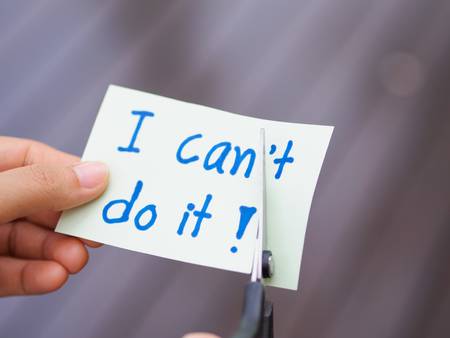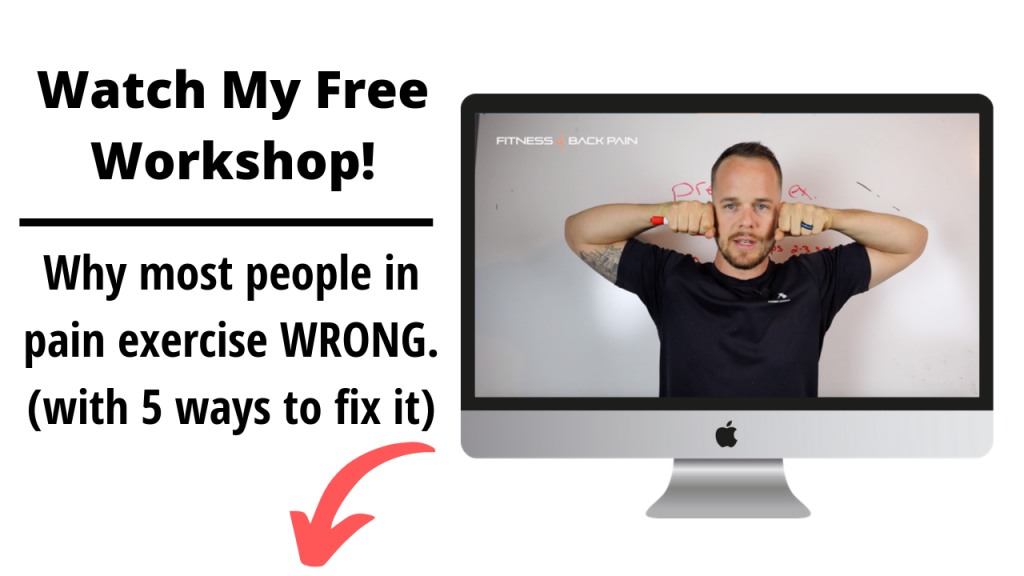
The power your mind and stress have on our lower back pain is very real and is something I struggled with for years. I have personally lived through debilitating emotional/stress induced pain and have come out on top on multiple occasions. In today’s post I want to respond to a recent article I found along with practical steps to go from emotionally wrecked and dealing with back pain to having a more structured and well-lit path to getting more control over your pain
Emotional stress and back pain is a real thing. In fact, I am not just saying that because I read it in a textbook or college course. It’s real. I have lived it. Longtime readers on here have heard me tell my emotional stress and back pain story numerous times so I’ll spare too much detail.
I picked up this article by the guys over at www.barbellmedicine.com. They are super smart guys that back their statements by research and swear deadlifts and squats can heal any ailment. Today’s post has nothing to do with bashing their work or this article but it does make a good point backed by science that I have been saying for quite sometime now.
The article highlights the medical industries attempt at trying to cure or gain more understanding/control over pain using what is known as radio-frequency neurotomy which is basically sending electrodes into the pain area on your body and destroying the nerves associated to that painful area. At face value this makes sense. Go into the area that’s hurting and destroy the pain receptors and vuala.
The pain should be gone right?
Maybe your doctor hasn’t used this technique on you but what about other procedures they’ve suggested? Maybe your doctor/surgeon said if we could just go in and remove that portion of the disc you won’t have the pain you’re experiencing. Or maybe he/she said that in order to stabilize your spine and remove the “pain trigger” we need to fuse the vertebra.
These techniques set out to address the source of the pain but not necessarily the cause of the pain.
The source and cause of pain are two separate things.
I look at this super technical procedure the same as any other surgical treatment for low back pain. It’s what Dr. Stewart McGill calls the hammer and nail approach to fixing complex issues in the body. The surgeons are the hammer and they are looking for that one thing that is damaged or broken (the nail). They believe if they can just fix the issue then the pain would go away.
They are simply looking for something to hammer.
But what happens when treating the source doesn’t work? What happens when the electrodes destroy the nerve signals but the pain doesn’t go away or maybe after the fusion or discectomy takes the place years later your still in pain?
What these techniques don’t approach is the psychosocial aspects of pain. The fear we experience after getting our diagnosis from our doctor or the fear we have around a certain movement or exercise.
Today, I want to give you some practical tips to address things like fear, anxiety, catastrophizing, fear avoidance and kinisiophobia as it relates to back pain. These are simple strategies I have used in the past and still to this day to help stop the poisonous habits that could be keeping you on the mental pain cycle you’re on.

5 practical approaches to gaining more control of your mental stress and its affect on your back pain.
(1) Write
Expressive writing has been one of the most powerful tools I have used to gaining control of my thoughts which lead to tension in my lower back. The book “Back in Control” by Dr. David Hanscom talks a lot about this and I highly suggest you learn the how-to and specifics of expressive writing before you brush it off. It’s not just journaling your thoughts!
This act of downloading every thought that comes to your head on paper then ripping it up is like having a weight lifted off your chest. I don’t know about you but I can have conversations in my head without ever saying a single word. I will go through to-do lists, past arguments, future stressors etc. over and over in my head. This affects my breathing, focus and mental health which directly affects the tension in my lower back.
Having somewhere to download these thoughts and getting them out of your head (even if they seem to stay there after doing it) is something that takes practice and grows stronger and stronger the more you do it.
Action steps: Start writing for 10 minutes before bed and first thing in the am. Write it all down, rip it out and tear it up.
(2) – Hi, my name is William and I have a ruptured L5-S1 disc.
I remember when I was searching out professionals all over the world for help. I would introduce my name and follow up with my diagnosis. This constantly re-established in my mind that I was broken and in need of a solution to my SPECIFIC brokenness. I was always let down when the answers or strategies didn’t really make sense or work right away for my specific problem.
Why would I need to work on breathing if my L5 -S1 vertebrae are practically laying bone to bone?
OR
Why do I need to audit my life and how I move if the pain is from having vertebra in my spine fused?
Insert your own life story but its all the same. Don’t allow yourself to become addicted to your diagnosis. You think about it so much thats its all you talk about. Nobody can have a conversation with you without you bringing up your back pain story in some way, shape or form.
If you’re not careful it can become all you talk about which will not only destroy your ability to recover and find long term relief but it will destroy the relationships around you.
Action step: Have your friends and family call you out if you keep bringing up your pain or issues. Work on talking about what your doing now that is going to help you improve. If you don’t have anything to work on START HERE.

(3) I can’t do that because…
You have to break the habit of constantly using fear based words like:
I can’t because my…
I shouldn’t do that because I have…
I stay away from doing things like that because…
What this does is grove a way of thinking into your brain where you are reminding yourself that this activity once caused pain which means it will always cause pain therefore I should avoid all activities like that because it will cause pain.
This is fear avoidance.
This actually puts limitations on your recovery. It’s like saying I am only allowed to get better up to this point. No matter how I feel if I attempt it again i can’t do it because I know it caused me pain in the past.
I am SOOO guilty of this and is something that I am constantly working on. What I have learned to do is stay present minded. As I work on fundamental relief strategies such as gaining more control of my own Pain Cycle or learning how to properly train my core to help stabilize my spine with movement.
I am also introducing these once scary movements and activities back into my program slowly. This is where you really need a coach because we naturally want to rush things and having someone there to help confirm a decision, modify a movement and tell you when to push forward or pull back is key.
Action Steps: If you find yourself avoiding a certain movement, activity or exercise. Go back to that one thing and approach it from its most fundamental level.
Lets take bending over to lift something like a bag of groceries. If you have to do a bunch of funky things just to get into a safe position to bend and grab a bag of groceries then break that movement down.
Can you stand and brace your core and breathe into your belly at the same time? Yes? Good move on.
Can you brace your core, breathe and bend your knees slightly as if you were to start going into a squat? Yes? Do 2 sets of this for 8 reps and make sure to not work through any pain.
If you can do the step above then move onto doing a full squat and building up to actually going into a squat then grabbing something like a bag of clothes off the ground.
This is a simple way to approach something that you have been avoiding due to pain. Modifying something should only be a short term solution not a long term fix.
(4) You had a bad day too!? Okay I don’t feel so bad now.
You know that feeling when you find out that someone you know going through the same thing you are had a set back or a bad day? It confirms that you both are human and on a journey that has ups and downs.
Community is one of the most power tools a lot of people are missing in their programs. I am not talking about your doctor, workout partner and husband, wife or best friend. I am talking about a group of people outside your circle of friends who are battling the same things you are.
There is power in this and my goal for the end of this year is to make more opportunities like this for you. If you already have a group of people then thats awesome. But one of the biggest things I feel this site is missing is more access to me and other back pain warriors as a community.
To get this moving I have been working on a community platform behind the scenes that will give you access not only to me 24/7 but easy to follow monthly workouts designed for the sensitive back, free courses on topics covering mobility, stretching and strengthening, mind set and fear avoidance training, live Q & A’s, full access to all of my sensitive back specific training videos for general low back pain warriors and post operation along with a ton more.
Be looking out for this launch coming early October.

(5) When will the relief kick in?
When it comes to emotional stress and back pain you have to abandon all personal time expectations. This is hard because due to the medical industry there is something you can take to get immediate relief from whatever ailments you have. The aspect of pain management I am referring to in this post takes time. It takes determination and an unwavering desire to do whatever it takes to see results.
Most of you will read through this and spend the next week applying what you have read but will lose track or hope once you realize the results are not coming as fast as you may want.
All I can say is trust the process and be patient.
This stuff takes time. It takes hard decisions to give up aspects of your life that are holding you back. It’s auditing your life and cutting out all the weeds and laying down fresh soil and seed so new things can grow.
I want to hear from you.
What strategies have you been taught or have found the most effective with gaining more control over your pain symptoms? Let me know in the comment section below!
Your coach,
William


When lower back pain hits after l-4 S-1 fusion surgery. I find stretching on my stomach helps alot. The biggest thing I find to to fill my mind with positive thoughts. The power of positive thinking by Norman Vincent Peale is a great book to turn around negative thinking. How many times have you seen a baby talked out of crying after falling. If the mind is positive it will tell the body that it is not that bad. This works! you are then a better person to be around in all areas
Love this Jack!
This is huge and something I have learned to include more and more in my coaching. The mind body connection is real and should be respected!!
This definitely something that I battle with daily. Trying not to “set myself back again” has been burned into my brain in an awful way. I do the mcgill big three daily no matter, what and try to mix in any other moves that i can fight through in the gym. Being a 6’9” bartender and manager is tough and staying on my feet for so long lately has become murder towards the end of the shift.
Even with a back brace, lidocaine patch and multiple ibuprofen, it seems like my career path has to take a turn. They want to do a dual level fusion, and of course ive been running from it for 5 years now with any and all techniques that i possibly can. Thanks for a great site and keep up the solid work!! The daily battle is no joke, but Things will heal!! At least i hope. Haha
Thanks Jarrett,
I know what you mean. The early stages of me finding out about my lower back was when I was waiting tables. It was brutal. You have to make decisions that will make positive deposits into the health of your spine. Invest in flat soled shoes so you’re not pitched forward while you stand. Give yourself breaks to sit down with a back rest and while you sit breath deep into your lower back and allow each breath to open that space up. When you get home spend time on your belly (if its not painful after a minute or so). If it doesn’t cause more discomfort then spend as much time on your stomach at home as you can. It will help reverse what the job has done and allow those muscles to relax.
Would love to keep this convo going and answer any questions you have.
William
I have suffered on and off from back pain for 14 years and this past summer I got so fed up with feeling like a prisoner in my own body I decided to take a walk. It was one of the most excruciating things I have ever done but I made up my mind and walked over 3 miles. My legs felt like they were being cut off from my body but I kept pushing through. I know no one is supposed to push through pain, but the rationale in my mind was I am a human being and walking is one thing that should be natural to my body, not an impossible activity.
The next day I woke up almost 100% pain free. I’ve been walking a couple times a week ever since and it has allowed me to gradually start exercising again. Due to my back pain I have never been able to run but one day on one of my walks I felt like running so I did. Now I can sprint and do pretty much anyt exercise with minimal pain.
I don’t know the logic behind why this worked but I think it was a combination of brain and body additude adjustment!
WOW Jeanette! What an amazing testimony. Thats 100% what I call going with your gut. This is around the topic of “fear avoidance” which is what I want to talk about coming up. In some cases just going for it is what needs to happen. This comes at all different levels of challenge for each individual. If you don’t mind I would love to use this testimony when that topic is discussed deeper!
So happy for your success!